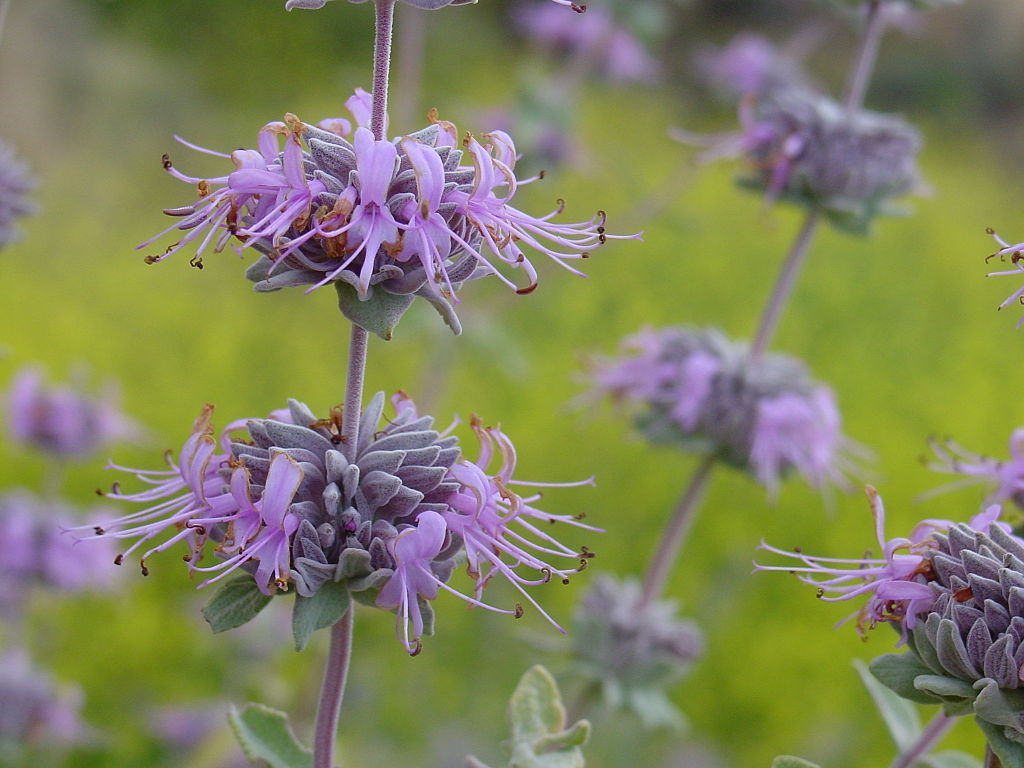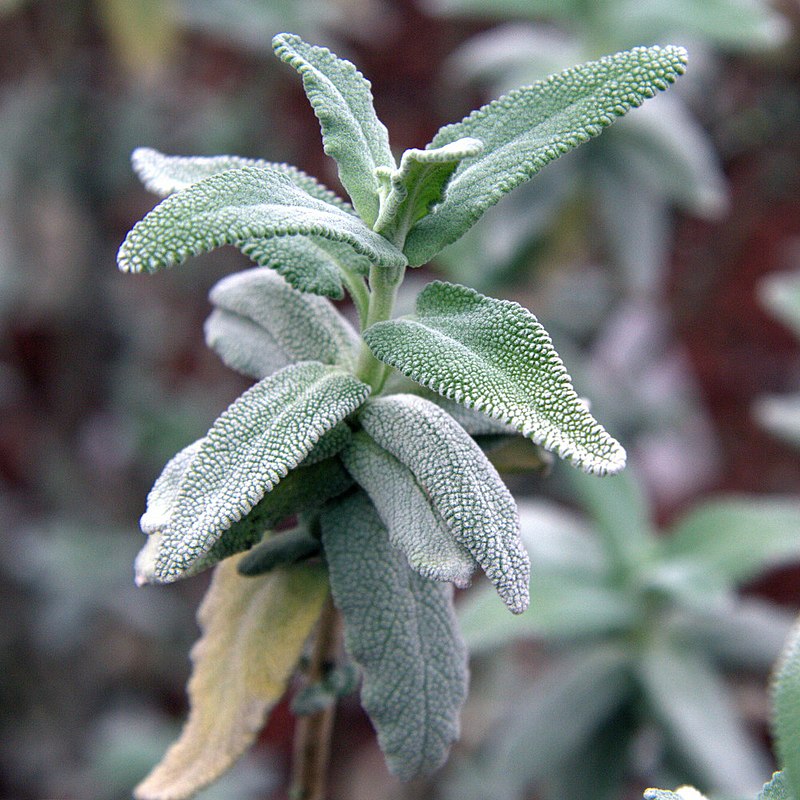
Also known as San Luis purple sage and gray sage, this semi-deciduous shrub is native to coastal Southern California and Baja California where it grows on dry open hillsides. It is a member of the deadnettle family, Lamiaceae, that also includes mint, coleus, and beebalm. The plant grows 2-5′ tall and has arching branches bearing puckered, gray-green leaves that are 3/4 to 3″ long. Both leaves and stems are covered with fine soft white hairs. From mid spring to early summer, 6-8″ long spikes appear bearing whorls of purple to lavender-pink flowers that are highly aromatic and attract hummingbirds, butterflies and bees. The seeds provide food for birds. Purple sage is tolerant of lean soil, drought, and heat. It is a good choice for a xeriscape and can be used for erosion control, hedge, or ground cover. The genus name, Salvia, comes from the Latin word word salvere, meaning to save and refers to the healing qualities associated with some species of the genus. The specific epithet, leucophylla, comes from ancient Greek words λευκός (leukós) meaning, white, and φύλλον (phúllon), meaning leaf, referring to the white hairs on the leaves. Photo Credit Noah Elhardt Wikimedia Commons

Type: Semi-deciduous shrub
Outstanding Features: Flowers, foliage
Form: Spreading, mound, rounded
Growth Rate: Rapid
Bloom: Spikes bearing whorls of purple to lavender pink flowers from mid spring to early summer
Size: 2-5′ H x 3-10′ W
Light: Full sun
Soil: Gravely, dry, well-drained
Hardiness: Zones 8-11
Care: Low maintenance
Pests and Diseases: Generally healthy
Propagation: Seed
Outstanding Selections:
‘Amethyst Bluff’
‘Bee’s Bliss’
‘Figueroa’
‘Point Sal’
Photo Credit: CT Johansson Wikimedia Commons